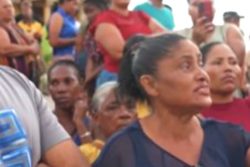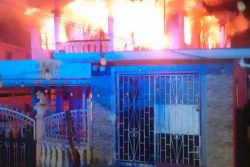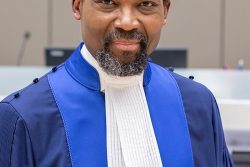Amidst concerns that government will have to spend extra to finance a major revamp of the Guyana Defence Force (GDF), Minister of State Joseph Harmon says that money has already been budgeted.
“It’s already budgeted for in our National Budget, so there is no new additional cost that the president spoke about that was not catered for in the current budget of the GDF,” Harmon said last Monday, when he was asked by this newspaper about the cost of the overhaul.
President David Granger, during the recent opening ceremony of the army’s Annual Officers’ Conference, announced that the GDF would soon undergo significant restructuring to ensure greater efficiency and to protect the country’s patrimony. Granger gave an extensive list of the areas to be tackled but no cost was given nor was there any mention of it being accounted for in the GDF’s budget for 2018. This led to speculation that the new project would require additional money.
After the announcement, Opposition Leader Bharrat Jagdeo questioned how government could find money to revamp the GDF but not pay severance to thousands of laid-off sugar workers.
When this newspaper checked the 2018 capital expenditure for the GDF, there was nothing to indicate the government’s planned revamping, particularly when the figures were compared to the allocations for the previous year. In fact, in total $539.9 million was allocated for Defence and Security Support, a significant decrease when compared to the $844.8 million allocated in 2017. Under the heading Air, Land and Water Transport, which caters for the purchase of vehicles, boats and equipment, $73.4 million was allocated for this year compared to $140 million for 2017. In the area of agricultural development, $31 million was allocated in comparison to the $30 million for last year. The money allocated for equipment was slashed by more than half this year, going to $74 million compared to $350 million for 2017. A noticeable increase was made in the allocation for the provision of buildings, facilities and upgrading of the electrical system, moving to $280.4 million this year compared to $169.8 million last year.
But Harmon when approached reiterated that the president’s focus was on the GDF’s structure and the way in which the force is organised.
“Several Corps of the force are being re-formed and re-capitalised. The Agriculture Corps will embark on agro-processing in order to produce foods, which can be preserved and packaged as compact rations for soldiers on long-range patrols and field operations and as emergency supplies to citizens affected by natural disasters, such as floods. The Air Corps and Coast Guard will be upgraded to allow for continuous surveillance over our airspace, maritime space and land-space and to support search-and-rescue services to persons in distress. The Engineer Corps will be restructured and re-equipped to enable it to reengage in the development of public infrastructure and assist in disaster relief efforts in other countries affected by natural disasters,” the president announced.
The president also said the Signal Corps would be re-established as the main arm for the advancement of information and communications technologies and telecommunications within the force.
Noting a link between the changes and the army’s responsibility of protecting the country’s patrimony, Granger said that it was recognised that the force faces numerous challenges in safeguarding the national territory, including airspace, borders, marine resources and rivers and as a result government is working to ensure that these are addressed.
“The vast areas, long distances and small aviation and maritime fleets available to our Air Corps and Coast Guard, respectively, limit our ability to effectively control our air and maritime zones. The Essequibo River, our largest river, does not have a single bridge. The Rupununi, our largest region, does not have a single highway. Access to nearly seventy-five percent of our country which is covered with forests is difficult, a situation compounded by inadequate infrastructure – such as aerodromes, bridges, highways and stellings. Infrastructural development is a top national priority. The Force’s technical corps must be strengthened to allow it to contribute effectively to national development and to execute its mandate of protecting the territory and preventing transnational crime. National defence is inseparable from national development. Public infrastructure enables public security by guaranteeing safety for our citizens and providing comfort for investors and visitors,” he was quoted in a Ministry of the Presidency press release as saying.
He spoke also of the Force embarking on a programme of long-range patrols aimed at re-affirming our national territorial borders – from Punta Playa to the Kutari and from Ankoko to Orealla.









